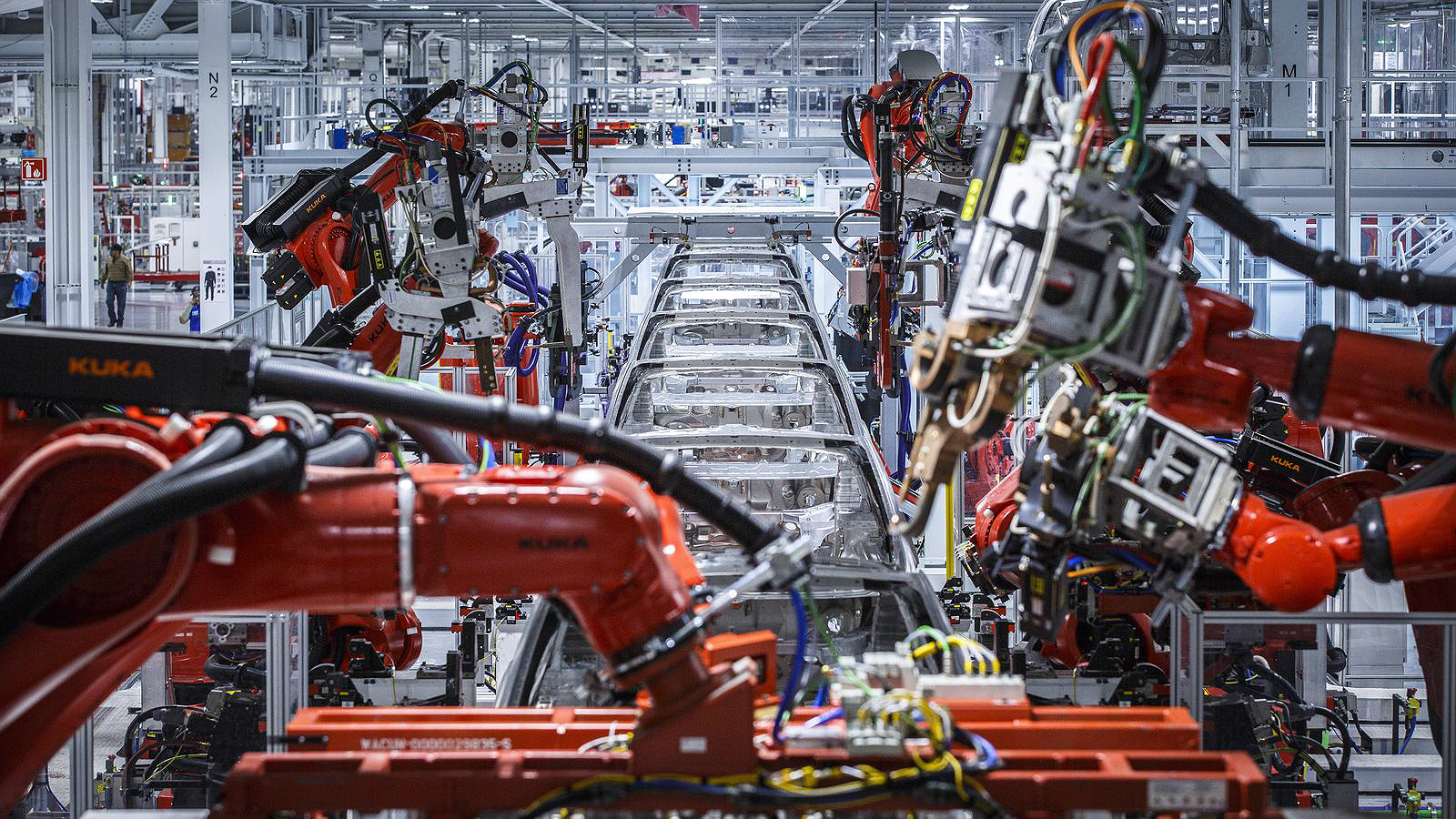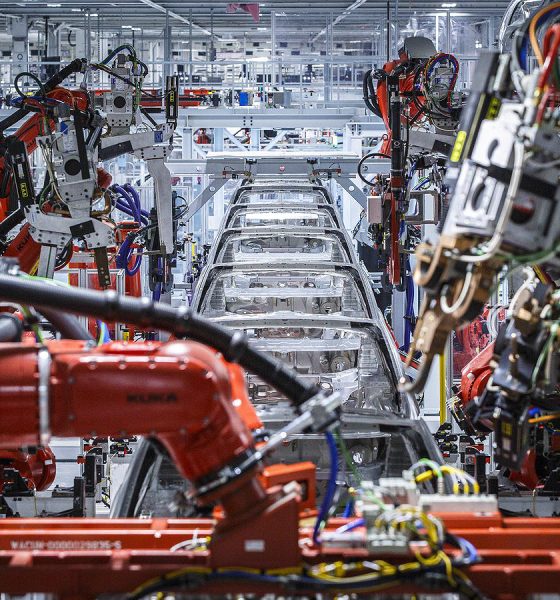

Investor's Corner
Tesla’s 2019 Annual Shareholder Meeting: 10 things retail investors want to know
Tesla’s retail investors are aggregating a number of inquiries that will hopefully be addressed by the electric car maker in the upcoming 2019 Annual Shareholder Meeting, which will be held later today. The questions are compiled from verified TSLA investors by Say, a startup whose aim is to develop effective investor communication tools.
Through the online platform, TSLA investors submitted and voted on inquiries that they wish would be discussed and explained by Tesla during the event. So far, the crowdsourced initiative has been garnering a fair amount of support from investors, with over 420 retail shareholders representing around $27 million worth of TSLA stock submitting their inquiries as of writing.
Here are a number of questions that have garnered a good number of votes from retail shareholders.
- What is the status of Tesla insurance for vehicles?
- What aspects of battery production will the integration of Maxwell technology affect and by what factor including cost, energy density, and longevity? Will it also impact batteries used for energy storage?
- Production has been battery constrained for some time now. Can you describe Tesla’s road map to increase cell and pack production as the Model Y, Semi, Pickup, and Roadster 2.0 will dramatically add to Tesla’s battery needs?
- Can Tesla provide an update on the direction of (its) solar business?
- Elon, you’ve said you want Tesla to be the best manufacturer on earth. Can you comment on some of the things manufacturing wise that will be different in Giga3 compared with Fremont and the other Gigafactories?
- Tesla does not advertise which is a good thing (mostly). However, majority of the people are unaware of how affordable, fun and efficient Tesla cars are. Any plans for non-traditional marketing to educate the people on the advantages of owning a Tesla and accelerate adoption?
- Is there any chance the Model Y production schedule will be pushed up? We all know Crossovers and Small SUVs are the highest selling automobiles now, and many other automakers appear to be readying theirs for sale.
- Would Tesla consider opening up the “Tesla Ride-sharing Network” prior to full autonomy being reached? Allowing the public to hail premium rides from Tesla owners through the Tesla App would add an additional source of revenue generation and introduce non-owners with the brand.
- At the end of 2018 Q4 you announced a significant multifaceted service initiative. How far has it come and how much further does it need to go to be where you want it to be?
- When will model 3 owners who paid for FSD get upgraded from HW2.5 to HW3?
Tesla has been tapping into the pulse of its retail shareholders using the Say platform for the past quarters. During last year’s second quarter earnings call, for example, retail investors representing $60 million worth of TSLA shares aggregated over 300 inquiries for the company, and five were personally addressed by CEO Elon Musk during the Q&A session. Say also played a huge part in Tesla’s Q1 2019 earnings call, where investors inquired about updates on projects such as the Maxwell acquisition and Powerpack production.
Tesla’s 2019 Annual Shareholder Meeting is expected to be held on Tuesday, June 11, 2019, at 2:30 p.m. Pacific Time at the Computer History Museum located in Mountain View, CA. Similar to the company’s Autonomy Day, which saw Tesla unveil the capabilities of its custom-designed full self-driving computer, the upcoming shareholder meeting will be livestreamed. The link for the event’s livestream could be accessed here.
The full list of questions from TSLA’s retail investors listed on Say for the Annual Shareholder Meeting could be accessed here.

Investor's Corner
Tesla stock closes at all-time high on heels of Robotaxi progress

Tesla stock (NASDAQ: TSLA) closed at an all-time high on Tuesday, jumping over 3 percent during the day and finishing at $489.88.
The price beats the previous record close, which was $479.86.
Shares have had a crazy year, dipping more than 40 percent from the start of the year. The stock then started to recover once again around late April, when its price started to climb back up from the low $200 level.
This week, Tesla started to climb toward its highest levels ever, as it was revealed on Sunday that the company was testing driverless Robotaxis in Austin. The spike in value pushed the company’s valuation to $1.63 trillion.
Tesla Robotaxi goes driverless as Musk confirms Safety Monitor removal testing
It is the seventh-most valuable company on the market currently, trailing Nvidia, Apple, Alphabet (Google), Microsoft, Amazon, and Meta.
Shares closed up $14.57 today, up over 3 percent.
The stock has gone through a lot this year, as previously mentioned. Shares tumbled in Q1 due to CEO Elon Musk’s involvement with the Department of Government Efficiency (DOGE), which pulled his attention away from his companies and left a major overhang on their valuations.
However, things started to rebound halfway through the year, and as the government started to phase out the $7,500 tax credit, demand spiked as consumers tried to take advantage of it.
Q3 deliveries were the highest in company history, and Tesla responded to the loss of the tax credit with the launch of the Model 3 and Model Y Standard.
Additionally, analysts have announced high expectations this week for the company on Wall Street as Robotaxi continues to be the focus. With autonomy within Tesla’s sights, things are moving in the direction of Robotaxi being a major catalyst for growth on the Street in the coming year.
Elon Musk
Tesla needs to come through on this one Robotaxi metric, analyst says
“We think the key focus from here will be how fast Tesla can scale driverless operations (including if Tesla’s approach to software/hardware allows it to scale significantly faster than competitors, as the company has argued), and on profitability.”

Tesla needs to come through on this one Robotaxi metric, Mark Delaney of Goldman Sachs says.
Tesla is in the process of rolling out its Robotaxi platform to areas outside of Austin and the California Bay Area. It has plans to launch in five additional cities, including Houston, Dallas, Miami, Las Vegas, and Phoenix.
However, the company’s expansion is not what the focus needs to be, according to Delaney. It’s the speed of deployment.
The analyst said:
“We think the key focus from here will be how fast Tesla can scale driverless operations (including if Tesla’s approach to software/hardware allows it to scale significantly faster than competitors, as the company has argued), and on profitability.”
Profitability will come as the Robotaxi fleet expands. Making that money will be dependent on when Tesla can initiate rides in more areas, giving more customers access to the program.
There are some additional things that the company needs to make happen ahead of the major Robotaxi expansion, one of those things is launching driverless rides in Austin, the first city in which it launched the program.
This week, Tesla started testing driverless Robotaxi rides in Austin, as two different Model Y units were spotted with no occupants, a huge step in the company’s plans for the ride-sharing platform.
Tesla Robotaxi goes driverless as Musk confirms Safety Monitor removal testing
CEO Elon Musk has been hoping to remove Safety Monitors from Robotaxis in Austin for several months, first mentioning the plan to have them out by the end of 2025 in September. He confirmed on Sunday that Tesla had officially removed vehicle occupants and started testing truly unsupervised rides.
Although Safety Monitors in Austin have been sitting in the passenger’s seat, they have still had the ability to override things in case of an emergency. After all, the ultimate goal was safety and avoiding any accidents or injuries.
Goldman Sachs reiterated its ‘Neutral’ rating and its $400 price target. Delaney said, “Tesla is making progress with its autonomous technology,” and recent developments make it evident that this is true.
Investor's Corner
Tesla gets bold Robotaxi prediction from Wall Street firm
Last week, Andrew Percoco took over Tesla analysis for Morgan Stanley from Adam Jonas, who covered the stock for years. Percoco seems to be less optimistic and bullish on Tesla shares, while still being fair and balanced in his analysis.

Tesla (NASDAQ: TSLA) received a bold Robotaxi prediction from Morgan Stanley, which anticipates a dramatic increase in the size of the company’s autonomous ride-hailing suite in the coming years.
Last week, Andrew Percoco took over Tesla analysis for Morgan Stanley from Adam Jonas, who covered the stock for years. Percoco seems to be less optimistic and bullish on Tesla shares, while still being fair and balanced in his analysis.
Percoco dug into the Robotaxi fleet and its expansion in the coming years in his latest note, released on Tuesday. The firm expects Tesla to increase the Robotaxi fleet size to 1,000 vehicles in 2026. However, that’s small-scale compared to what they expect from Tesla in a decade.
Tesla expands Robotaxi app access once again, this time on a global scale
By 2035, Morgan Stanley believes there will be one million Robotaxis on the road across multiple cities, a major jump and a considerable fleet size. We assume this means the fleet of vehicles Tesla will operate internally, and not including passenger-owned vehicles that could be added through software updates.
He also listed three specific catalysts that investors should pay attention to, as these will represent the company being on track to achieve its Robotaxi dreams:
- Opening Robotaxi to the public without a Safety Monitor. Timing is unclear, but it appears that Tesla is getting closer by the day.
- Improvement in safety metrics without the Safety Monitor. Tesla’s ability to improve its safety metrics as it scales miles driven without the Safety Monitor is imperative as it looks to scale in new states and cities in 2026.
- Cybercab start of production, targeted for April 2026. Tesla’s Cybercab is a purpose-built vehicle (no steering wheel or pedals, only two seats) that is expected to be produced through its state-of-the-art unboxed manufacturing process, offering further cost reductions and thus accelerating adoption over time.
Robotaxi stands to be one of Tesla’s most significant revenue contributors, especially as the company plans to continue expanding its ride-hailing service across the world in the coming years.
Its current deployment strategy is controlled and conservative to avoid any drastic and potentially program-ruining incidents.
So far, the program, which is active in Austin and the California Bay Area, has been widely successful.








